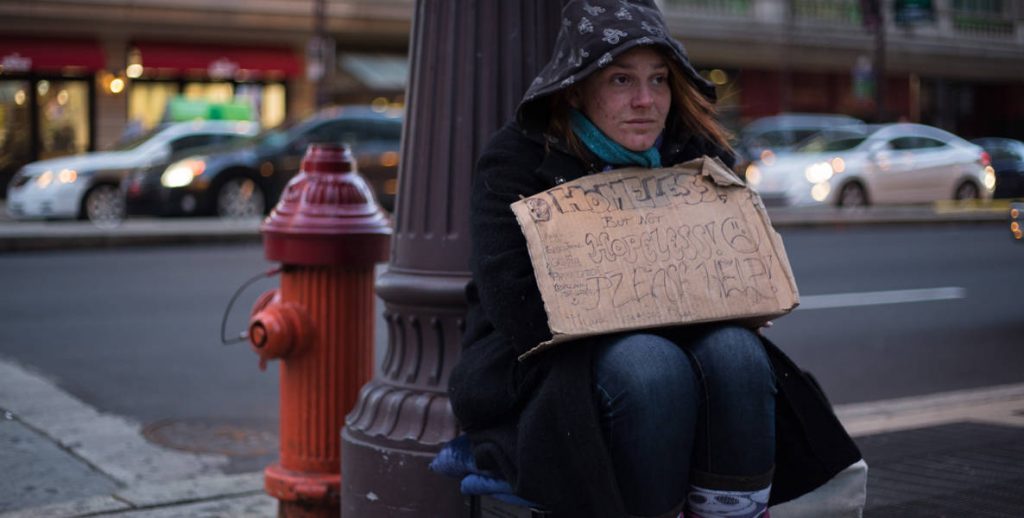Like many American big cities—Philadelphia comes to mind—Albuquerque is plagued by a twin set of issues that face every resident almost as soon as they walk out the door: A homeless population, and streets littered with trash. It’s so ubiquitous, in fact, that many of us stop seeing it altogether. Cigarette butts in sidewalk crevices? A coffee cup held out for change? Just part of the architecture of city living.
But not so for Albuquerque Mayor Richard Barry. One day in September he saw a panhandler holding a sign that said, “Will Work.” And that got him thinking: There are all these people out here who want jobs. And there are all these streets that need picking up. Why not make the one work for the other?
Barry had already launched “There’s A Better Way,” an outreach campaign encouraging Albuquerque residents to call 311, rather than give money, when they see a panhandler, to trigger city services to that person. But that wasn’t enough. So in September, he gave $50,000 and a van to an Albuquerque homeless services center to pay panhandlers for a day of cleaning up the city.
Two mornings a week, the van driver for St. Martin’s Hospitality Center drives to common panhandling corners, where he picks up as many as 12 homeless residents who say they are willing to work for the day. He takes them to an area of the city identified by the city’s Solid Waste Department, where they get $9 an hour—25 cents more than minimum wage—to clear brush, or pick up trash for five-and-a-half hours.
While there![]()
“I think it’s great, and we’re totally ready to do it,” says Laura Weinbaum, ProjectHOME’s vice president for public affairs and strategic initiatives. “We just need to put all the pieces in place.”
“We are not only getting them off the street panhandling,” Palmer says. “They get a job, they get services, the neighborhood has less people panhandling. And we get cleaner streets.”
Palmer says the Mayor’s $50,000 investment will last until this June, when St. Martin’s hopes to get another grant, and to expand the program. (The money mostly goes to paying the workers, and the van driver, a security guard at St. Martin’s who Palmer says is the key to the program’s success.)
It’s the simplicity of the Albuquerque program that makes it so appealing—and so replicable. One check from the city. One van. One driver. One more way to reach the 600 or so chronically homeless people in the city. And, one more way to clean up Philly.
In fact, Philadelphia’s ProjectHOME is already trying to figure out how to bring There’s A Better Way here. “I think it’s great, and we’re totally ready to do it,” says Laura Weinbaum, ProjectHOME’s vice president for public affairs and strategic initiatives. “We just need to put all the pieces in place.”
Those pieces are mostly logistical: Where to get the money (perhaps from a city RFP, like this one from earlier in the month); how to get the van; and which city departments to coordinate with. She also says they’d need to shape the program to fit Philly’s homeless population, which differs from that in Albuquerque.
“The vast majority of people who panhandle here are not homeless,” she says. “Meanwhile, the things that make a person chronically homeless are not necessarily ideal for making them able to be picked up and work right away.”
Still, Weinbaum says ProjectHOME could target areas of the city like Kensington, which has a sizable homeless population—and lot of sex trafficking. “Those folks are probably more employable,” she notes.
No matter where they come from, a key, like in Albuquerque, would be connecting those workers with services to get them indoors, and keep them there.
“We are one of the poorest large cities in the US, where people are on the brink of being homeless at any point,” says Jason Miller, executive director of Ready, Willing & Able, which employs and houses mostly recently released inmates. “If you can connect to them, get them inside, the likelihood that they will get services is a lot higher. We need as many options to do that, as we can get.”
Header Photo: Patrick Clark

